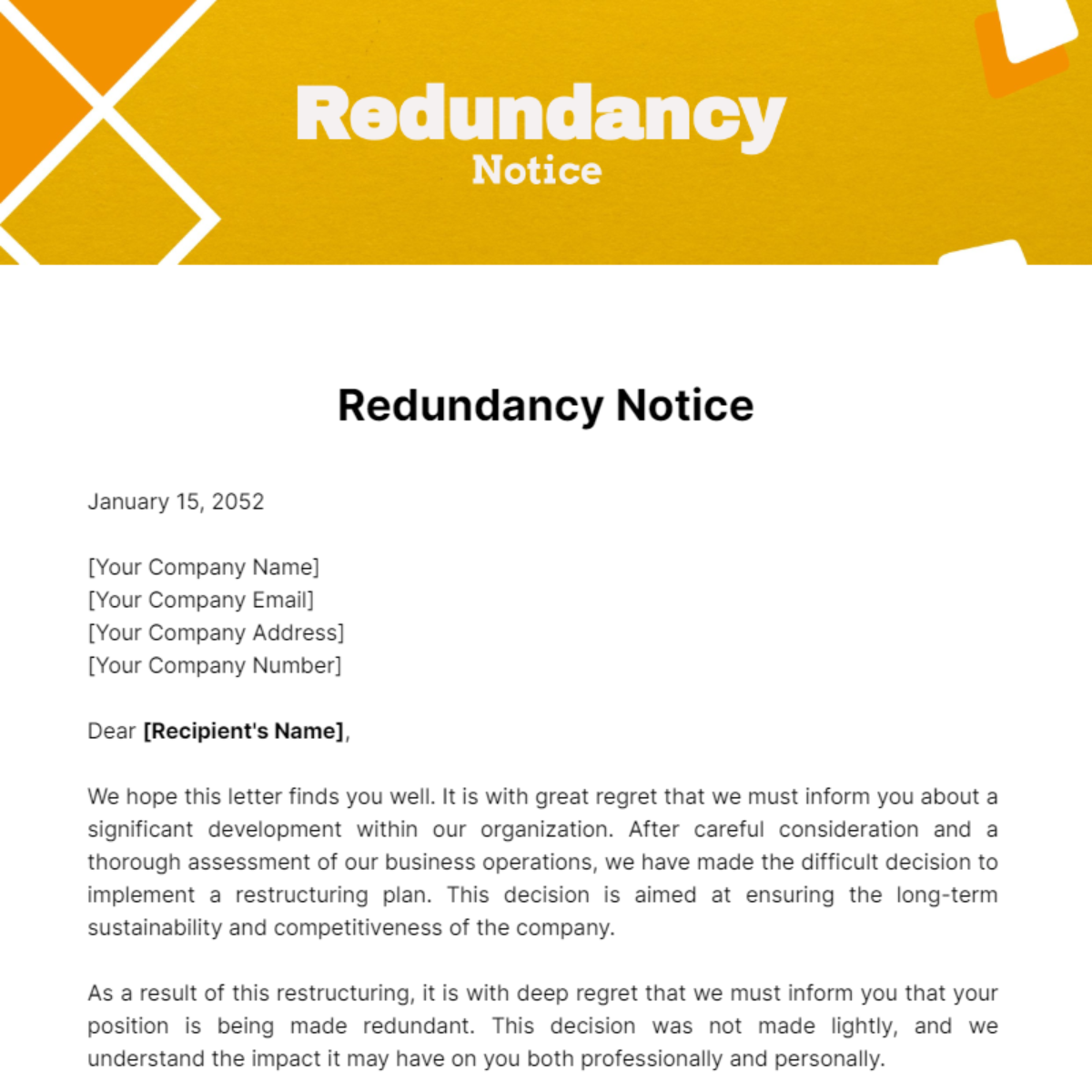Exploring the Interaction Between Business Redundancy and Organizational Adaptability for Future Growth
In the dynamic landscape of today's business globe, the intricate relationship between business redundancy and business adaptability arises as an essential element for sustained growth and success. Companies often encounter the difficulty of striking a delicate balance between keeping a level of redundancy to minimize dangers and cultivating flexibility to react swiftly to the ever-evolving market demands.
Value of Firm Redundancy
Firm redundancy is a critical component that improves organizational strength and mitigates operational dangers. By integrating redundancy actions within the business structure, firms can better stand up to unexpected interruptions and changes in business setting. Redundancy offers as a strategic buffer, enabling companies to adjust and respond effectively to unexpected challenges without jeopardizing crucial procedures.
One secret element of the relevance of company redundancy is its function in guaranteeing continuity during times of situation. When confronted with abrupt adjustments or emergencies, redundant systems, sources, or employees can action in to maintain important functions and protect against extensive disruptions. This connection not just safeguards the firm's credibility and customer trust fund but likewise lessens monetary losses and operational downtime.

Methods for Business Versatility

One more critical strategy is investing in technology and facilities that can support versatility and scalability. Carrying out electronic devices, automation, and information analytics can simplify procedures, boost efficiency, and offer important understandings for educated decision-making. Moreover, creating adaptable organizational structures that allow for quick adjustments to market dynamics and client requirements is necessary for remaining affordable in a swiftly advancing setting. By proactively recognizing possible disturbances and possibilities, companies can proactively adjust and prosper in an ever-changing company landscape.
Harmonizing Redundancy and Adaptability
Attaining an unified balance between functional redundancy and business adaptability is extremely important in navigating the complexities of a dynamic organization environment. Redundancy within a firm provides a safeguard, making certain connection and stability in operations. Nonetheless, an extra of redundancy can result in inefficiencies and prevent flexibility to altering market conditions. On the other hand, organizational flexibility permits companies to react immediately to outside disruptions and take new possibilities. Striking the ideal equilibrium in between redundancy and adaptability is a fragile process that calls for a deep understanding of the company's objectives, sector characteristics, and risk tolerance.
To achieve this balance, business require to conduct routine analyses of their procedures to determine locations where redundancy is needed for risk mitigation and where flexibility can drive advancement and growth. Implementing flexible frameworks, fostering a society of continuous understanding and enhancement, and encouraging open communication across all degrees of the company are crucial techniques to balance redundancy and adaptability efficiently. By lining up these two critical components, companies can position themselves for lasting development and success in an ever-changing service landscape.
Case Studies on Adjustment Success
In taking a look at circumstances of successful business adaptation, it becomes obvious that the interplay in between functional redundancy and flexibility is a defining aspect in shaping resilient businesses. One compelling study is that of Netflix. Initially a DVD rental solution, Netflix showed exceptional flexibility by transitioning into a streaming platform when digitalization interfered with the sector. By purposefully spending in modern technology and material development, Netflix not just survived however thrived in a swiftly developing market. An additional standout example is Amazon. Starting as an on-line book shop, Amazon continually adapted its service model, expanding into diverse markets such as cloud computing and expert system. This flexibility allowed Amazon to stay ahead of competitors and meet changing consumer needs. Finally, Adobe supplies a noteworthy illustration of have a peek here successful adaptation. The company shifted from selling software program licenses to a subscription-based version, guaranteeing recurring profits streams and enhanced client interaction. These study underscore the relevance of operational redundancy paired with business adaptability in cultivating long-term growth and competition.
Building Resilience for Future Development
Structure resilience for future development needs a strategic placement of functional procedures with market dynamics and emerging trends. Companies must adjust to transforming environments by fostering a society of versatility, development, and constant enhancement. Strength entails not only getting better from problems however likewise proactively preparing for future obstacles. One crucial aspect of building resilience is spending in durable danger management approaches to alleviate potential disturbances. This includes scenario planning, expanding supply chains, and developing backup plans for numerous contingencies (who pays redundancy money).
In addition, fostering strong connections with stakeholders, such as customers, workers, distributors, and the community, is crucial for maintaining and weathering uncertainties trust fund and support during unstable times. Effective communication and openness play a vital role in building strength, as they help line up assumptions and promote cooperation in navigating uncertainties.
Moreover, companies need to prioritize discovering and development initiatives to upskill employees and furnish them with the needed devices to adapt to changing scenarios. By spending in their labor force, firms can enhance their versatility and dexterity, ultimately strengthening their durability for lasting future development.
Verdict

In the vibrant landscape of today's company globe, the detailed relationship between firm redundancy and organizational adaptability arises as a crucial element for continual development and success. Companies usually deal with the difficulty of striking a fragile equilibrium in between keeping a degree of redundancy to mitigate dangers and fostering versatility to react promptly to the ever-evolving market needs.To accomplish this balance, firms require to perform routine assessments of their operations to recognize locations where redundancy is required for danger reduction and where flexibility can drive development and development.In conclusion, the interaction in between company redundancy and business adaptability is critical for future development. Structure durability with a combination of description redundancy and adaptability will ensure that try this site companies are prepared for the obstacles of the future.
Comments on “What Happens to Redundancy If Company Goes Bust? A Guide to Your Rights”